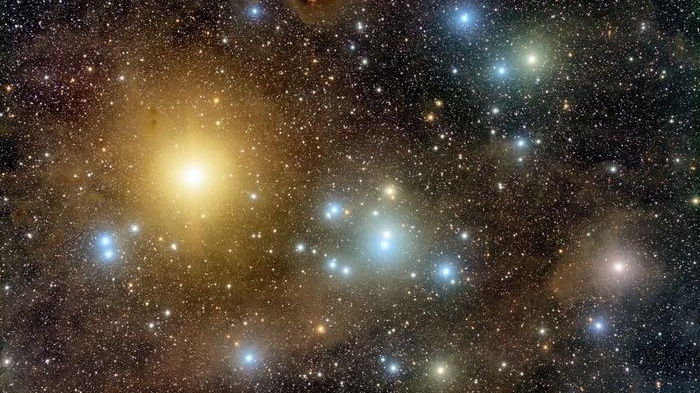Astronomers may have discovered the closest black holes to Earth
Scientists think two, or even three, black holes could live just about 150 light years from our planet.

Astronomers may have discovered that the closest black holes to Earth could be lurking in the Hyades Cluster, which sits only around 150 light-years from the sun.
In fact, these black holes may have been ejected from the dense cluster of stars millions of years ago to wander the galaxy alone. Even so, they would still be around ten times as close as the black hole previously considered the closest to Earth.
Visible in the constellation of Taurus, the Hyades is an open cluster of hundreds of stars. Open clusters like this one are collections of stars believed to have formed at the same time from the same massive cloud of gas and dust. Because of that, stars within this kind of cluster are known to share foundational characteristics like chemical compositions and ages.
In order to make the detection of what could be the closest black holes to our planet, a team led by Stefano Torniamenti, a postdoctoral researcher at the University of Padua, created a simulation of the movements and evolutions of stars in the Hyades. The simulation was also generated with black holes present in the equation. The scientists then compared results from this simulation with actual observations previously made of the velocities and positions of the open cluster’s stellar population. The latter dataset owes itself to the Gaia space telescope.
"Our simulations can only simultaneously match the mass and size of the Hyades if some black holes are present at the center of the cluster today, or until recently," Torniamenti said in a statement.
Related: Black holes keep ‘burping up’ stars they destroyed years earlier, and astronomers don’t know why
Torniamenti and colleagues found the models which best lined up with observations of the Hyades were those that included two or three black holes inside the star cluster. Beyond this, simulations that involved black holes in the star cluster which theoretically got ejected no more than 150 million years ago also matched Gaia data.
Get the Space.com Newsletter
Breaking space news, the latest updates on rocket launches, skywatching events and more!
This is because, the team says, if those black holes had been violently tossed from the Hyades when the cluster was around a quarter of its current age — approximately 625 million years old — the collection of stars would not have evolved enough to remove evidence of their prior existence.
Even if the black holes have been ejected from the Hyades by now, the researchers explain, they would still remain the closest black holes to Earth despite their rogue status. That is according to the simulations, which indicate that if the black holes aren’t currently in the Hyades, they are still close to it.
Prior holders of the closest-black-hole-to-Earth record were Gaia BH1 and Gaia BH2, which, as their names imply, were uncovered with Gaia data just this year.
Gaia BH1 is located 1,560 light-years away from Earth, while Gaia BH2 lies around 3,800 light-years away. Even though this means both black holes are located in Earth’s backyard (in cosmic terms, at least),they are still over 10 and 20 times as far away as the Hyades cluster and its potential black hole duo or trio.
Both this new research and the prior discovery of Gaia BH1 and BH2 exemplify how Gaia, launched in 2013, has been reshaping astronomy. The space telescope made it possible for astronomers to study the positions and velocities of individual stars in clusters like the Hyades for the first time.
Gaia is capable of such breakthroughs because it can accurately measure the positions and motions of billions of stars against a background sky. Tracking stellar movements with such high precision helps to reveal gravitational influences tugging on these stars, even if that influence comes from hidden objects like small stellar mass black holes.
"This observation helps us understand how the presence of black holes affects the evolution of star clusters," researcher author and University of Barcelona researcher Mark Gieles said. "These results also give us insight into how these mysterious objects are distributed across the galaxy."
The team’s research was published in June in the journal Monthly Notices of the Royal Astronomical Society.
Join our Space Forums to keep talking space on the latest missions, night sky and more! And if you have a news tip, correction or comment, let us know at: community@space.com.

Robert Lea is a science journalist in the U.K. whose articles have been published in Physics World, New Scientist, Astronomy Magazine, All About Space, Newsweek and ZME Science. He also writes about science communication for Elsevier and the European Journal of Physics. Rob holds a bachelor of science degree in physics and astronomy from the U.K.’s Open University. Follow him on Twitter @sciencef1rst.









